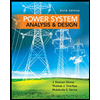Discussion: 1. From the results you obtained, discuss the mechanism of comparing two D. C voltages by the comparator. 2. What is the main player in the comparison process? 3. How can this operation be useful in practice? 4. Suggest a few applications for the comparator.
Discussion: 1. From the results you obtained, discuss the mechanism of comparing two D. C voltages by the comparator. 2. What is the main player in the comparison process? 3. How can this operation be useful in practice? 4. Suggest a few applications for the comparator.
Delmar's Standard Textbook Of Electricity
7th Edition
ISBN:9781337900348
Author:Stephen L. Herman
Publisher:Stephen L. Herman
Chapter7: Parallel Circuits
Section: Chapter Questions
Problem 4PP: Using the rules for parallel circuits and Ohmslaw, solve for the missing values....
Related questions
Question

Transcribed Image Text:4.
Procedure
1. Connect the circuit as shown in Figure 3. Wiring sequence :
12V(+)-1, 12V(-)-3, GND-2, 30V(+)-8, 15V(+)-19, VM(+)48, VM(-)-65,
30V(-)-66, 15V(-)-66.
2. Switch the power supply on ±12V.
3. Set reference voltage V=1V at non inverting i/p and vary the
voltage at inverting i/p a shown in table 1. Note down all the
observations.
20V
+12V
0- 30V
DC
Supply
1 12V
Power
Supply
+12V
-12V
6.
741
0- 15V
DC
Supply
Vref
V 200V
-12V
Results fafer
intenting input
ISP
non
in ker ting Vref l Valt
0/P
-l1.118
0/p v
a.6
1.2
1.2
inkerting infut
inkertingKef=2 VaH
I/P
I/PV
e.5
Hell8
2.
2.2
1.5
IL 5
2.2
Discussion:
1. From the results you obtained, discuss the
mechanism of comparing
two D. C voltages by the comparator.
2. What is the main player in the comparison process?
3. How can this operation be useful in practice?
4. Suggest a few applications for the comparator.
Expert Solution
This question has been solved!
Explore an expertly crafted, step-by-step solution for a thorough understanding of key concepts.
Step by step
Solved in 3 steps with 2 images

Knowledge Booster
Learn more about
Need a deep-dive on the concept behind this application? Look no further. Learn more about this topic, electrical-engineering and related others by exploring similar questions and additional content below.Recommended textbooks for you

Delmar's Standard Textbook Of Electricity
Electrical Engineering
ISBN:
9781337900348
Author:
Stephen L. Herman
Publisher:
Cengage Learning

Power System Analysis and Design (MindTap Course …
Electrical Engineering
ISBN:
9781305632134
Author:
J. Duncan Glover, Thomas Overbye, Mulukutla S. Sarma
Publisher:
Cengage Learning

Delmar's Standard Textbook Of Electricity
Electrical Engineering
ISBN:
9781337900348
Author:
Stephen L. Herman
Publisher:
Cengage Learning

Power System Analysis and Design (MindTap Course …
Electrical Engineering
ISBN:
9781305632134
Author:
J. Duncan Glover, Thomas Overbye, Mulukutla S. Sarma
Publisher:
Cengage Learning